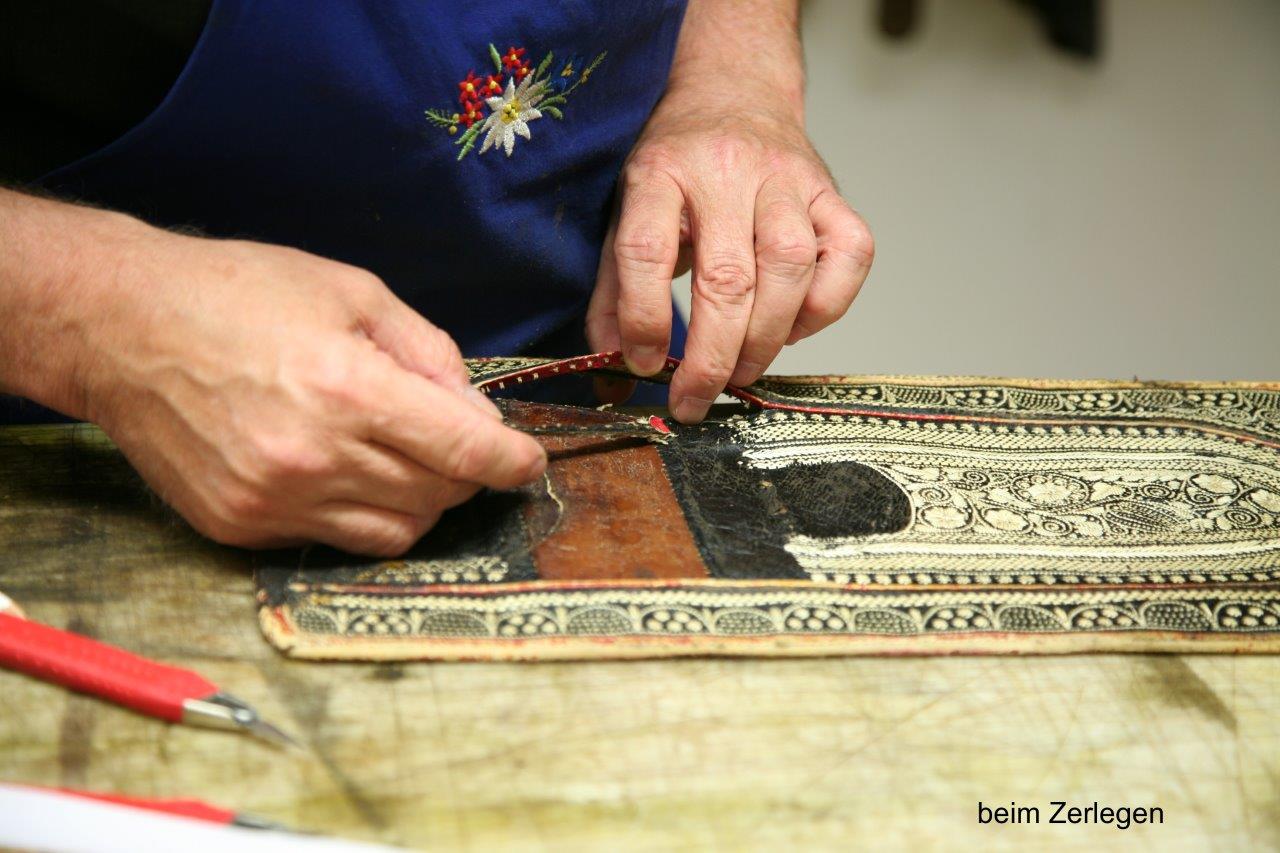Quill Embroidery (Restoration, Further Development, and Use)
Traditional craftsmanship throughout Austria, inscribed 2019
Quill embroidery is a special technique of ornamentation that was developed over 200 years ago and experienced its heyday during the 19th century. To this day, this special technique—which requires years of training and practice—is used in the production and restoration of traditional "Tracht" garments. The types of items that it decorates include women’s and men’s belts, handbags, broad and elaborately ornamented "Ranzen" belts (derived from money belts), and wallets.
In quill embroidery, split quills from peacock feathers are ornamentally woven into vegetable-tanned leather that has been pre-pierced with an awl. This special technique required in order to produce and restore quill-embroidered objects such as men’s satchels (Geldkatzen) or shopping bags (Zöger) requires years of training and practice. Quill-embroidered objects used to be produced primarily by belt-makers, but also by glovers and even occasionally by saddlers. The birth of quill-embroidered fashion can be dated to around 1790, when quill-embroidered belts succeeded the Zinnfatschen—a type of belt ornamented with tin nails that was commonly worn by both men and women at the time. Quill embroidery experienced its heyday during the 19th-century. Due to the elaborate process necessary to produce quill-embroidered objects, such objects were always very expensive and functioned as status symbols for wealthy burghers with trade businesses as well as wealthy farmers. They were also among the items worn by members of traditional costume associations.
Since belt-making no longer exists today as a trade, quill embroidery is now categorised as belonging to the trade of saddlery (and bag-making). Formal apprenticeships do not exist; training is only still possible as a special form of bag-making. Alongside the production of new objects, many jobs involve the restoration of historical pieces. Such pieces also serve as models for replicas. These days, valuable quill-embroidered items are worn above all by members of traditional costume associations and brass bands, to whom their value is not only monetary, but also very much ideational.
Downloads
- Expertise (in German only) Stipperger 2 MB (pdf)
- Expertise (in German only) Bockhorn 213 KB (pdf)
- Application form (in German only) 431 KB (pdf)


![[Translate to EN:] © J. Ségur/ZED, with the permission of UNESCO](/fileadmin/_processed_/d/b/csm_Convention-2003-IKE_0832a6a47d.jpg)
![[Translate to EN:] © ÖUK](/fileadmin/_processed_/3/9/csm_P1011318_7eac86402f.jpg)

![[Translate to EN:] © Weitblickfilm](/fileadmin/_processed_/9/8/csm_Workshop_17_2dee1e1fd8.jpg)